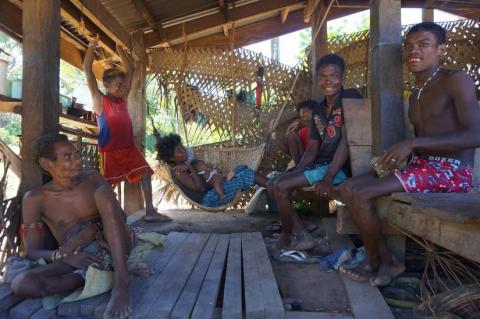Unique social structure of hunter-gatherers explained
This information allowed the researchers to understand how individuals in each community they visited were related to each other. Despite living in small communities, these hunter-gatherers were found to be living with a large number of individuals with whom they had no kinship ties. The authors constructed a computer model to simulate the process of camp assortment. In the model, individuals populated an empty camp with their close kin - siblings, parents and children.
When only one sex had influence over this process, as is typically the case in male-dominated pastoral or horticultural societies, camp relatedness was high. However, group relatedness is much lower when both men and women have influence - as is the case among many hunter-gatherer societies, where families tend to alternate between moving to camps where husbands have close kin and camps where wives have close kin.
First author of the study, Mark Dyble (UCL Anthropology), said: "While previous researchers have noted the low relatedness of hunter-gatherer bands, our work offers an explanation as to why this pattern emerges. It is not that individuals are not interested in living with kin. Rather, if all individuals seek to live with as many kin as possible, no-one ends up living with many kin at all."

